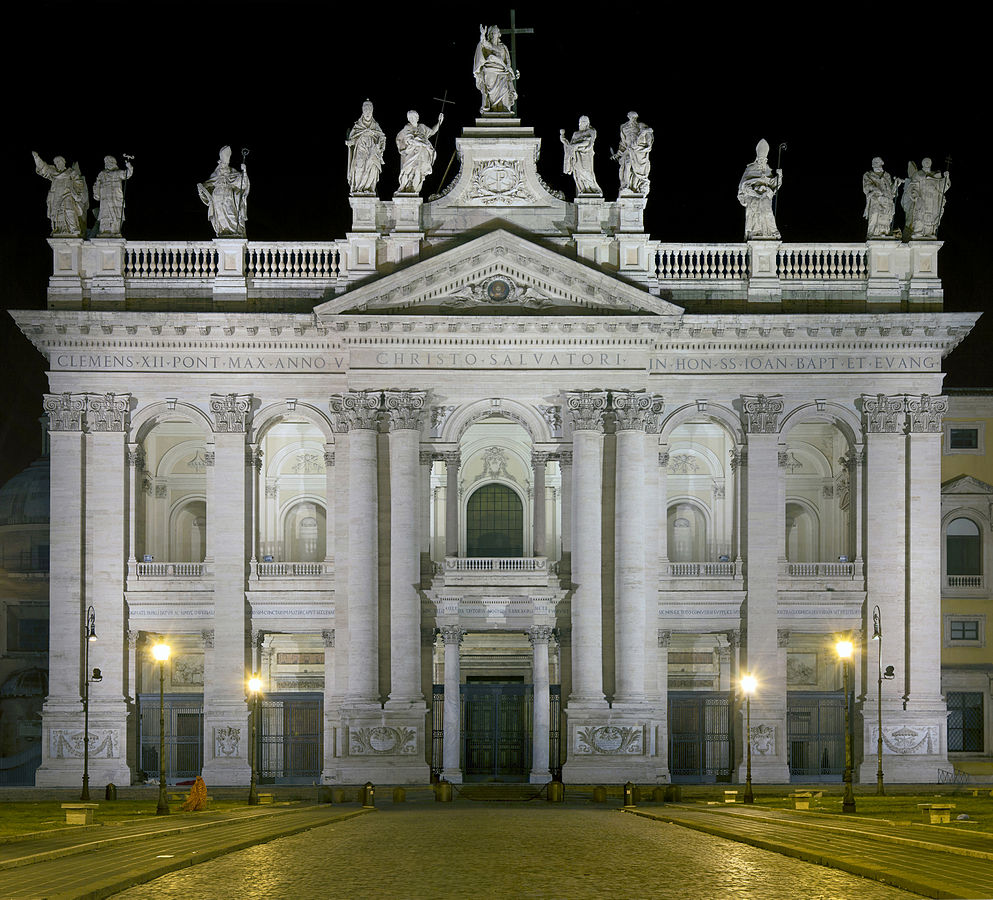St. John Lateran Basilica in Rome is considered the mother church of all the Catholic churches in the Western world; inscribed on the church facade for all to see are the Latin words “omnium urbis et orbisecclesiarum mater et caput,” meaning, “The mother and head of all the churches of the city and of the world.”
But why is this particular church so important to our Catholic faith that it is designated as the “mother church,” and so prominent that it garners a feast day on the Church liturgical calendar?
The church has a long history, beginning in first century Rome. Read that history here.
But why a feast day for a church?
The feast day honoring the dedication of St. John Lateran was introduced in the 12th century and was initially celebrated only in the city of Rome. In 1726, Pope Benedict XIII ordered a worldwide commemoration of the basilica as a sign of universal Catholic unity. The feast is celebrated on Nov. 9 and is known today as “The Feast of the Dedication of St. John Lateran Basilica.”
The intent behind the annual feast day is to encourage Catholics to keep strong ties to our past and to the universal Catholic Church. The building of St. John Lateran was a mark of religious freedom. Christians could worship without fear and in a church of their own. Through the grace of God the followers of Jesus had persevered over sufferings and persecutions; Christianity had been granted both legal recognition and public security. What joy those early Christians must have experienced in this newfound freedom, what excitement in joining together in their own house of worship which some historians claim held 10,000 people. This feast day reminds us of our Catholic heritage, the significant role the dedication of the Lateran Basilica played in that heritage and the courage of those first followers of Christ and the importance of uniting ourselves to the Holy See. As the pope is our universal pastor, the Lateran is our universal church.
Did you know?
The church home of a diocesan bishop is the cathedral. Here the bishop is enthroned on the cathedra, or chair, the symbol of his teaching authority. Among his celebrations in the cathedral are ordinations, baptisms, confirmations, the blessing of the holy oils and celebrating great feasts of the Church such as the Triduum. In the Diocese of Rome, the official church of the Bishop of Rome, the pope, is St. John Lateran (not. St Peter’s Basilica). Very early in his pontif-icate, each new pope goes to St. John Lateran and officially takes possession. While the duties of the pope require his presence in many other churches, St. John Lateran Basilica has been the cathedral for the Bishop of Rome for over 1,700 years.



